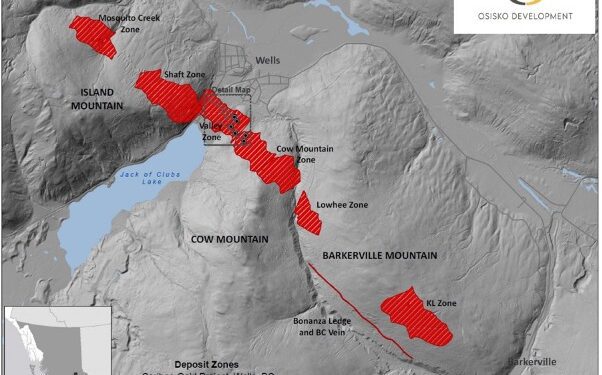Osisko Metals Incorporated (TSXV:OM) has unveiled positive results from ongoing hydrogeological modelling and its application to dewatering costs at the Pine Point Project, located in the NWT, Canada.
A new 3D hydrogeological model was created and has yielded significant reductions in the estimated water inflow rates into the proposed open pit and shallow underground mines, relative to the estimates in the July 2020 PEA study.
Reduction in dewatering costs was estimated for a portion of the project, specifically in a sub-zone of the Main Zone known as the C1 Cluster, which includes, potentially, three open pit and two underground production areas.
Highlights:
- New data confirms that underground water flow at Pine Point is preferentially controlled by subvertical structural discontinuities such as fracture zones or low-displacement faults, with little evidence for significant ground water flow from formational aquifers in either the Sulfur Point or Pine Point Formations.
- Potential for significant reductions in Operating and Sustaining Capital Expenditures associated to dewatering over the Life of Mine (“LOM”) in the 2020 PEA economic model for the Pine Point project.
- Q1 2022 PEA Update will incorporate the new 3D hydrogeological model, dewatering volume estimates and all associated cost reductions.
The cost reductions are achieved by the aggregate effect of dewatering across all six production areas in the C1 Cluster; since dewatering in the deepest area will reduce the amount of ground water to be extracted from adjacent production areas.
Chairman and CEO, Robert Wares, said the ultimate objective is to focus on a given cluster to maximize mining efficiency and thereby reduce the volumes of water to manage. The integrated mining and hydrogeological modelling will be an iterative process. As the 2021 field data is being integrated into the model, the same analysis will then be applied to all ten pit clusters on the project. The results will be included in the PEA Update scheduled for release in Q1 2022.
“The 2021 hydrogeological modelling confirms that discrete faults, and not continuous formational aquifers, control water inflow in the mineralised horizon at Pine Point,” Mr Wares said.
“This is very different from aquifer models used in the 2020 PEA, which resulted in very expensive life-of-mine dewatering estimates. Stated simply, managing water influx along discrete zones is much simpler and cheaper than managing an entire aquifer, and the C1 Cluster cost analysis demonstrates this.
“These results hopefully eliminate, once and for all, investor concerns that water management at Pine Point would be unwieldy. I wish to congratulate the technical team alongside our consultants for this significant de-risking milestone.”
President and COO, Jeff Hussey, said the hydrogeological analysis required the use of the company’s project scale 3D geological modelling developed after three years of data recovery, analysis and re-interpretation.
“This 3D hydrogeological modelling process is being applied for the first time at Pine Point and we are rapidly seeing highly encouraging results. We will now refine both the hydrogeological model and, more importantly, the mining plan.
“We believe we will be able to achieve lower dewatering rates than historically experienced through better mine sequencing using the cluster strategy within the Life-of-Mine plan that is being integrated with the new hydrogeological modelling results.”
For further information please visit: https://www.osiskometals.com/en/












